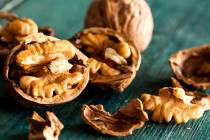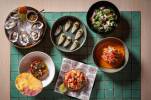How to choose the best fruits and vegetables this fall
Summer finally has lost its grip on us, which means the stone fruits, cotton candy grapes and corn on the cob that have been heaped on store displays for the past few months are giving way to apples and pears and, soon, persimmons, winter squashes and root vegetables.
We're already seeing fall produce, and soon will be seeing more. But when it comes to choosing the best of nature's bounty, few of us know what to look for. Here are some tips from the produce experts at Whole Foods Market and a few other sources.
Apples
Look for fruit free of blemishes, bruises and soft spots; the skin should be shiny. Since they emit ethylene, store them in a cool place, away from ethylene-sensitive foods such as avocados, bananas or citrus fruits.
Pears
Choose firm pears and let them ripen at room temperature for several days. Bartletts change color when they ripen, but to see if others are ripe, "check the neck"; when it yields to pressure the pear is ripe. Note that pears ripen from the top down.
Grapes
While grapes are readily available all year, autumn is the season for Concords, Champagne and Holiday seedless red grapes. Look for fruit with green pliable stems. The powdery white substance is "bloom," which protects from decay and moisture loss.
Persimmons
Avoid any with brown spots or bruises. Hachiya persimmons, which are acorn-shaped, remain tart and chalky until they're extremely ripe. Fuyu persimmons, which are shaped more like tomatoes, are sweeter and can be eaten when still firm.
Cranberries
Look for brightly colored berries and avoid any that are shriveled or discolored. Ripe cranberries will bounce when dropped from a height of a few inches and will float in water. Refrigerate, tightly wrapped, for as long as two months, or freeze.
Leafy greens
These also are readily available all year, but variety and flavor are best in the fall, especially with kale, chard, watercress, leaf lettuce, mustard greens, arugula, radicchio and chicory. Look for bright, fresh-looking leaves.
Beets
Choose those that are firm and smooth; if they have leaves, be sure they're bright and fresh. Don't wash beets until you're ready to use them.
Sweet potatoes
Choose uniform sizes to ensure even cooking (although that's not important if you'll be cubing them before cooking). Choose those that feel heavy in your hand, store in a cool, dark place and use promptly, discarding any that sprout.
Winter squashes
Look for squashes that remain firm when pressed, have intact stems and seem heavy for their size. Store in a cool, dark place for several weeks if unpeeled, but refrigerate if cut.
Contact Heidi Knapp Rinella at Hrinella@reviewjournal.com. Find more of her stories at www.reviewjournal.com, and follow @HKRinella on Twitter.


































